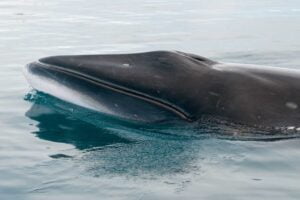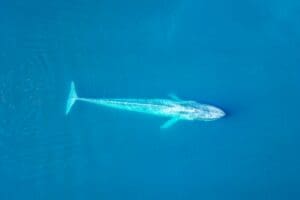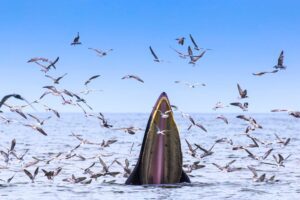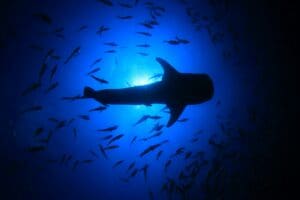Understanding Whale Behavior: A Whale Watcher’s Guide
This guide is a whale watcher’s key to unlocking the mysteries of whale behavior, transforming your whale-watching experience from a mere spectacle to an enlightening encounter with marine life. Get ready to dive deeper into the world of whales and enrich your understanding of these fascinating beings.
The Whale Watching Experience
Once you’ve chosen your tour, knowing what to expect on a whale-watching trip is important. Whale sightings are never guaranteed, but tour operators will often know where the whales will most likely be found based on migration patterns and feeding grounds. It’s important to remember that whales are wild animals and may not always behave predictably. However, with patience and a little bit of luck, you may be rewarded with a once-in-a-lifetime experience.
Planning Your Whale-Watching Adventure
When planning your whale-watching adventure, choosing the right tour for your needs is important. Consider the following factors:
- Location: Choose a location where the whales are known to frequent, such as Alaska, Hawaii, Iceland, or Norway.
- Season: Different whale species migrate at different times of the year, so choose a season that corresponds with the species you want to see.
- Tour Company: Research tour companies and check their ratings and reviews before booking to ensure a reputable and responsible company.
Firsthand Experience vs. Observations
Whale watching provides the opportunity to see these creatures in their natural environment, which is vastly different from seeing them in captivity. Observing whales in the wild allows for a better understanding of their behavior and social interactions with each other and their environment. It also provides a unique opportunity to witness their natural behaviors, such as breaching, tail slapping, and spy hopping.
In contrast, seeing whales in captivity can be a very different experience. Whales in captivity are often kept in small tanks and deprived of their natural environment and social interactions. This can lead to abnormal behaviors and health issues.
Whale Behavior on the Surface
Whales are majestic creatures that capture the imagination of many. Watching them surface and interact with their environment can be an awe-inspiring experience.
Surface Behaviors
These behaviors include fin waving, breaching, spy-hopping, water play, and other activities:
- Breaching: One of the most spectacular whale behaviors is breaching, where the whale leaps out of the water. It’s believed this could be a way to communicate, dislodge parasites, or just a form of play.
- Spyhopping: Whales perform a behavior known as spyhopping where they vertically poke their heads out of the water. This allows them to see what’s happening around them above the water’s surface, like checking out boats or other objects.
- Lobtailing and Fluking: Lobtailing involves a whale lifting its tail out of the water and then slapping it on the surface, which could be a form of communication or a way to stun prey. Conversely, fluking occurs when a whale raises its tail out of the water before diving, often signaling a deep dive.
- Blowing/Spouting: A spout or blow is created when whales exhale at the water’s surface. The shape and height of the blow can help identify different whale species.
- Pectoral Fin Slapping: Whales, like humpbacks, are known to slap their pectoral fins against the water’s surface. This behavior could be a means of communication, a way to dislodge parasites, or simply a playful action.
- Logging: When whales are resting, they often float motionless at the surface, a behavior known as logging. This can make them look like a log floating in the water.
- Mating Dances: During mating seasons, whales often display a series of surface behaviors like breaching, tail slapping, and fin slapping, which may be part of their mating rituals.
- Bubble Net Feeding: Humpback whales are known for their unique bubble net feeding technique. They create a circle of bubbles to trap a school of fish and then swim upwards through the circle with their mouths open to feed.
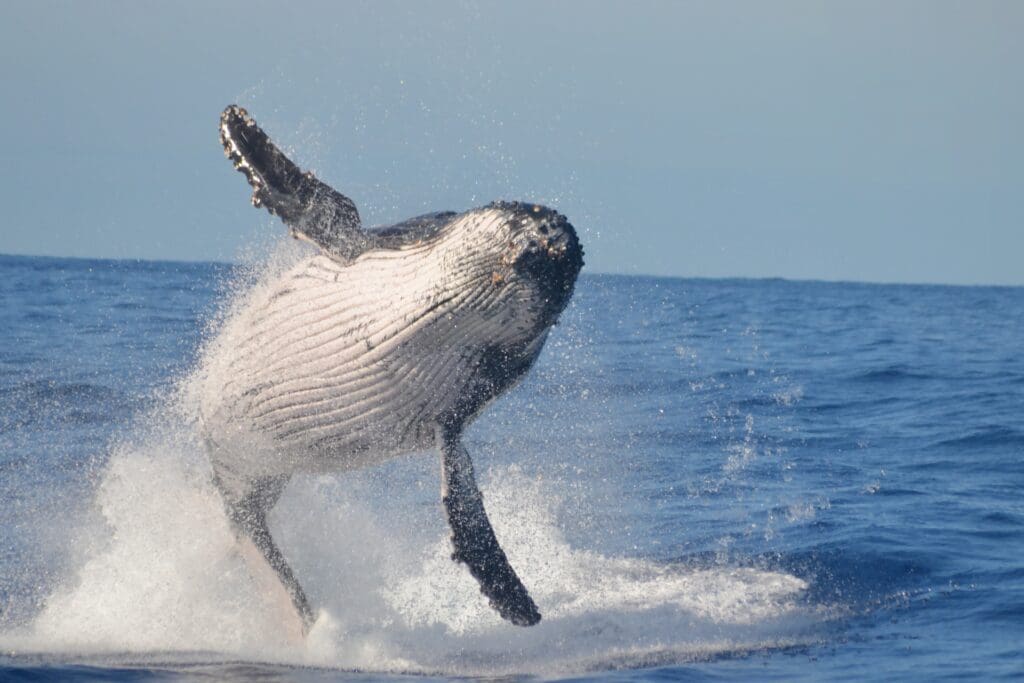
Interaction with Boats and Humans
Whales are some of the most amazing creatures in the ocean, and sometimes they get curious about us humans! Here are some cool things about how whales interact with boats and people:
- Whale Hello! Have you ever seen a whale pop its head out of the water to look around? That’s called spyhopping; whales do it to check out boats and people. It’s like they’re saying hello!
- Momma Whale’s Protection: Their moms can be super protective if there are baby whales. They might swim between their baby and a boat to keep them safe, just like your mom might do for you.
- Watch Out for Boats: Sometimes, whales accidentally bump into boats. They might not see the boat, or the boat moves too fast. This can be dangerous for both the whale and the people on the boat.
- Changing Whale Plans: When many boats are around, whales might change what they’re doing. They could stop looking for food or even change the way they talk to each other because the boats are too noisy.
- Whales and Fishermen: In some places, whales have been spotted hanging around fishermen. They might be curious about the fishing nets or even try to grab a quick snack!
- Rules for Watching Whales: There are special rules for watching whales so that we don’t bother them too much. These rules tell us to keep a safe distance and not to stay too long.
- Whales Need Clean Water: Things like pollution from land can make the ocean a tough place for whales to live. Keeping our oceans clean is really important for their health.
- Helping Whales in Trouble: Sometimes, people help whales that are stuck in fishing nets. It’s a big job, but it can save a whale’s life!
Remember, whales are wild animals, and we should always respect them and their home in the ocean. Watching whales can be super exciting, but we have to ensure we do it in a way that’s safe for them and us.
The Language of Whales for Whale Watcher
Beyond Vocalizations: Body Language in Whales
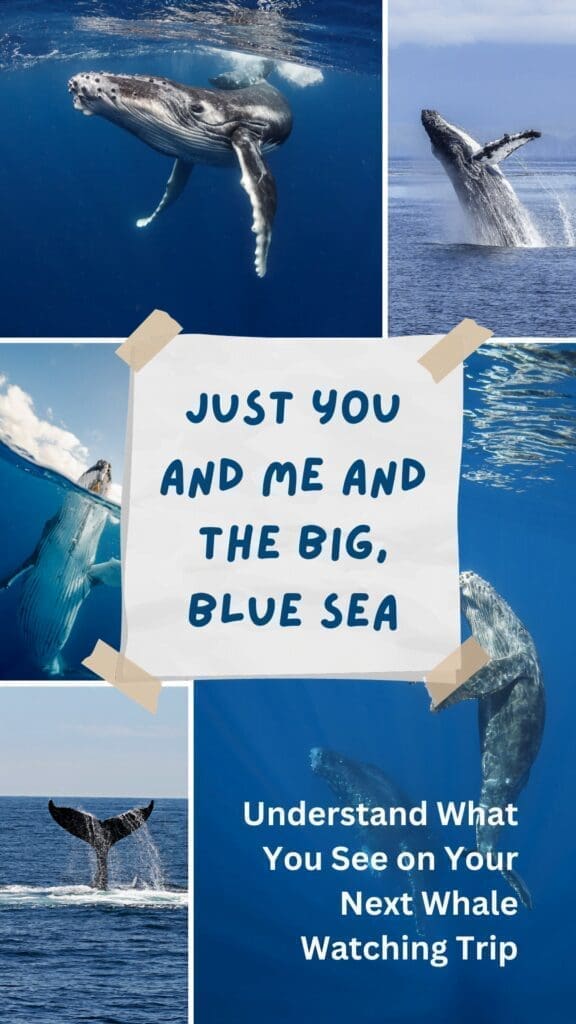
Whales use a variety of body movements to communicate with each other. For example, breaching or jumping out of the water can signify aggression, playfulness, or a way to communicate over long distances. Tail slapping and fin waving are also common behaviors that can convey different messages depending on the context.
The positioning and posture of whales within a pod are more than just random arrangements; they can provide critical insights into the social dynamics and relationships within these marine communities. For instance, when you observe a whale swimming closely alongside another, it often signifies a strong social bond, perhaps between a mother and her calf or between companions.
Conversely, a whale seen swimming alone, separated from the group, might indicate several things. It could suggest a period of isolation, which is sometimes normal depending on the species and individual behavior.
Interpreting Whale Songs
Whale songs are perhaps the most well-known form of whale communication. Male humpback whales, in particular, are known for their complex and beautiful songs, which they use to attract mates and establish dominance.
Scientists have been studying whale songs for decades, but much of their meaning remains a mystery. Some researchers believe that whale songs may be used to communicate information about food sources, migration routes, or other important aspects of whale life.
Overall, understanding the language of whales is a key part of whale watching. Watchers can better appreciate these magnificent creatures and their complex social lives by paying attention to their body language and vocalizations.
Save Whale! Whale Adoption project
Whale Behavior Across Different Species
Whales have their own special way of talking to each other, and it’s super interesting, especially if you’re out watching them! Here’s what you should know about the language of whales:
- Whale Songs: Whales make incredible sounds that can travel for miles underwater. These are often called whale songs. Humpback whales are famous for their songs, which can last for hours and change every year. It’s like they have their own hit music charts in the ocean!
- Clicks and Whistles: Some whales, like orcas (killer whales), use clicks and whistles to talk to each other. They use different sounds for different things, like finding food or just saying “hello” to other whales in their group.
- Echolocation: This is a cool trick used by some whales, like sperm whales. They send out clicks that bounce off fish and other objects in the water. By listening to the echoes, they can figure out where things are, even if they can’t see them. It’s like having a natural sonar system!
- Different Dialects: Just like people in different parts of the world speak differently, whales in different oceans have their own accents or dialects. Scientists can sometimes tell where a whale is from just by listening to its sounds.
- Mood Sounds: Whales also make sounds to show how they’re feeling. They might make a happy sound while playing or a loud sound if they’re scared or angry.
- Listening Carefully: When you’re whale watching, you might not always hear these sounds because many of them happen underwater. But sometimes, you can hear them if the whales are close to the surface or if you have special underwater microphones.
- Whale Communication is a Mystery: Scientists are still trying to determine everything whales say. It’s like trying to crack a secret code!
So, next time you’re out watching whales, remember that they might be having a whole conversation that we’re just beginning to understand. It’s one of the many things that make whales so fascinating!
Whales are known for their unique and fascinating behaviors, and each species exhibits its own set of characteristics. Understanding these behaviors can enhance the whale-watching experience and provide insights into the lives of these magnificent creatures.
Species-Specific Behaviors
Whales are not all the same, and different types of whales have their own special ways of doing things. Here’s a look at some species-specific behaviors of different whales:
- Humpback Whales: These whales are famous for their amazing acrobatics. They love to breach (jump out of the water) and slap the surface with their fins and tails. Humpback whales are also known for their complex and beautiful songs, which can last long and change yearly.
- Orca (Killer Whale): Orcas are like the wolves of the sea. They hunt in groups called pods and have unique ways of catching their food. For example, they can work together to create waves that knock seals off ice floes. Each pod has its own hunting techniques and even its own set of sounds for communication.
- Blue Whales: The largest animals on Earth, blue whales are more on the quiet side. They’re not as acrobatic as humpbacks, but they make really loud and low-pitched sounds. These sounds are used for communication and can travel incredibly long distances underwater.
- Sperm Whales: These deep-diving whales are known for their echolocation abilities. They make loud clicking sounds to find their way and hunt squid in the ocean’s dark depths. Sperm whales can dive deeper and stay underwater longer than most other whales.
- Gray Whales: Gray whales are known for their long migrations, traveling thousands of miles between feeding and breeding grounds. They are also curious about boats and often come close to checking them out.
- Beluga Whales: Belugas are known as the ‘canaries of the sea’ because of their wide range of vocalizations. They can make chirps, clicks, whistles, and other sounds. Belugas are also unique because they can move their necks, which most other whales can’t do.
- Minke Whales: Minke whales are the smallest of the baleen whales, and they’re known for being very fast and elusive. They often take quick, shallow dives and are less likely to breach than larger whales.
Each type of whale has its own set of behaviors that make it special. Knowing these behaviors can help you figure out what kind of whale you’re looking at and understand what they might be doing when you’re out whale watching.
Conclusion
So, the next time you find yourself gazing out at the sea, watching these gentle giants, remember that you’re witnessing centuries of evolution, a complex web of life, and a story that’s as deep and vast as the ocean itself. Let’s carry this sense of wonder and responsibility with us as we continue to explore, understand, and safeguard the world of these extraordinary sea creatures.
FAQ
Documentaries
- The Whale (2011): This documentary follows the story of Luna, a young orca separated from her pod, and the efforts of a small coastal community to reunite her with her family. It provides a unique perspective on the social behavior of orcas and the impact of human interference on their lives.
- Blackfish (2013): This documentary explores the dark side of the captive marine mammal industry, focusing on the story of Tilikum, a captive orca responsible for the deaths of three people. It sheds light on captivity’s physical and psychological effects on these intelligent creatures.
Books
- The Hidden Lives of Whales by Dr. Andrew Stevenson: This book provides a comprehensive overview of whale behavior and the latest scientific research on their lives. It covers topics such as migration, communication, and social behavior.
- Whales, Dolphins, and Porpoises by Mark Carwardine: This book is a comprehensive guide to all 90 species of cetaceans, including whales, dolphins, and porpoises. It provides detailed information on their behavior, distribution, and conservation status.


